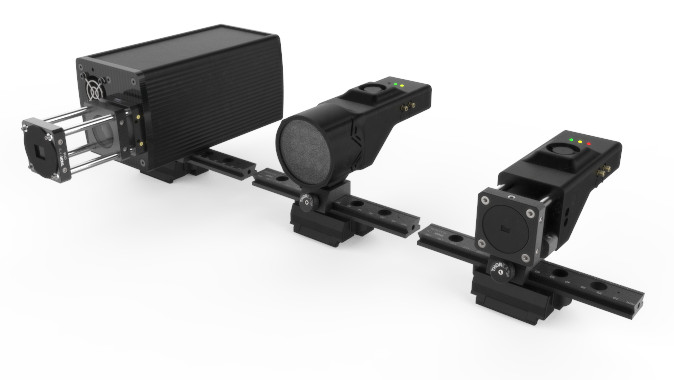Low-cost PIV: Laser diode pulsing system
Contact
Dr. William Thielicke
E-Mail: thielicke@optolution.com
Telefon: +49 (0) 7621 582 83 46
The laser diode pulsing system (LD-PS) by OPTOLUTION is a low-cost illumination for Particle Image Velocimetry (PIV). It generates bright and very thin light sheets with user selectable pulse spacing and pulse length. The system is very compact and extremely easy to use. The high brightness is achieved by toggling (arrays of) high-power laser diodes using a special laser driver circuit. We offer optical power outputs of 5 W, 20 W and 40 W. The systems can be used for measurements in air or water. The LD-PS includes a built-in synchronizer that can be used to generate pulses for cameras. Several firmware for our cameras can be implemented. But the laser can also be setup to accept TTL pulses from a third-party synchronizer. Light sheet optics, an optical rail and a tripod mount (Manfrotto 200PL- Quick Release Plate) are included.
The settings of the LD-PS are changed wirelessly (USB radio dongle included) - directly from PIVlab. The very compact LD-PS is actively cooled by two fans and has a very small average power consumption.
The most important advantage over continuous wave lasers is that frame straddling can be enabled, allowing to capture higher velocity events using very low interframe time (down to 10 µs interframe time is possible).
Aspects you have to keep in mind with pulsed laser diodes:
-
With pulsed lasers, significantly higher flow velocities can be measured than with CW lasers - also in combination with low frame rate cameras. This is enabled by using a technique called "frame straddling". For example, a speed of up to 20 m/s can be measured with the 5 Hz, 25-megapixel pco.panda. With the 1000 Hz, 1.2-megapixel Chronos 1.4, CW lasers would enable a maximum speed of 2 m/s. With a pulsed laser, speeds of up to 40 m/s are possible under the same conditions.
-
Brightness is determined by the pulse length. If you lower the pulse length, you will have to decrease the illuminated area to still have enough light.
- Pulse length is limited by the flow velocity: If you have high speed flow, you will have to decrease the pulse length to prevent excessive motion blur.
- The interframe time (pulse separation) limits the pulse length: Pulse length must be smaller or equal to the interframe time.

The integrated synchronizer generates signals for several camera types.

40 W module, LED module und 5 W module (L-R)

Frame-straddling allows to measure very high velocities.

Pulse timing and pulse length are controlled from PIVlab. Pulse length is given in percent of the interframe time.

Typical light signal, measured with a photodiode and an oscilloscope.
The PIV system in action:
YouTube: Privacy policy for external media
This video cannot be viewed due to your privacy settings.
Please enable External Media to view this video.
YouTube: Privacy policy for external media
This video cannot be viewed due to your privacy settings.
Please enable External Media to view this video.
YouTube: Privacy policy for external media
This video cannot be viewed due to your privacy settings.
Please enable External Media to view this video.
YouTube: Privacy policy for external media
This video cannot be viewed due to your privacy settings.
Please enable External Media to view this video.